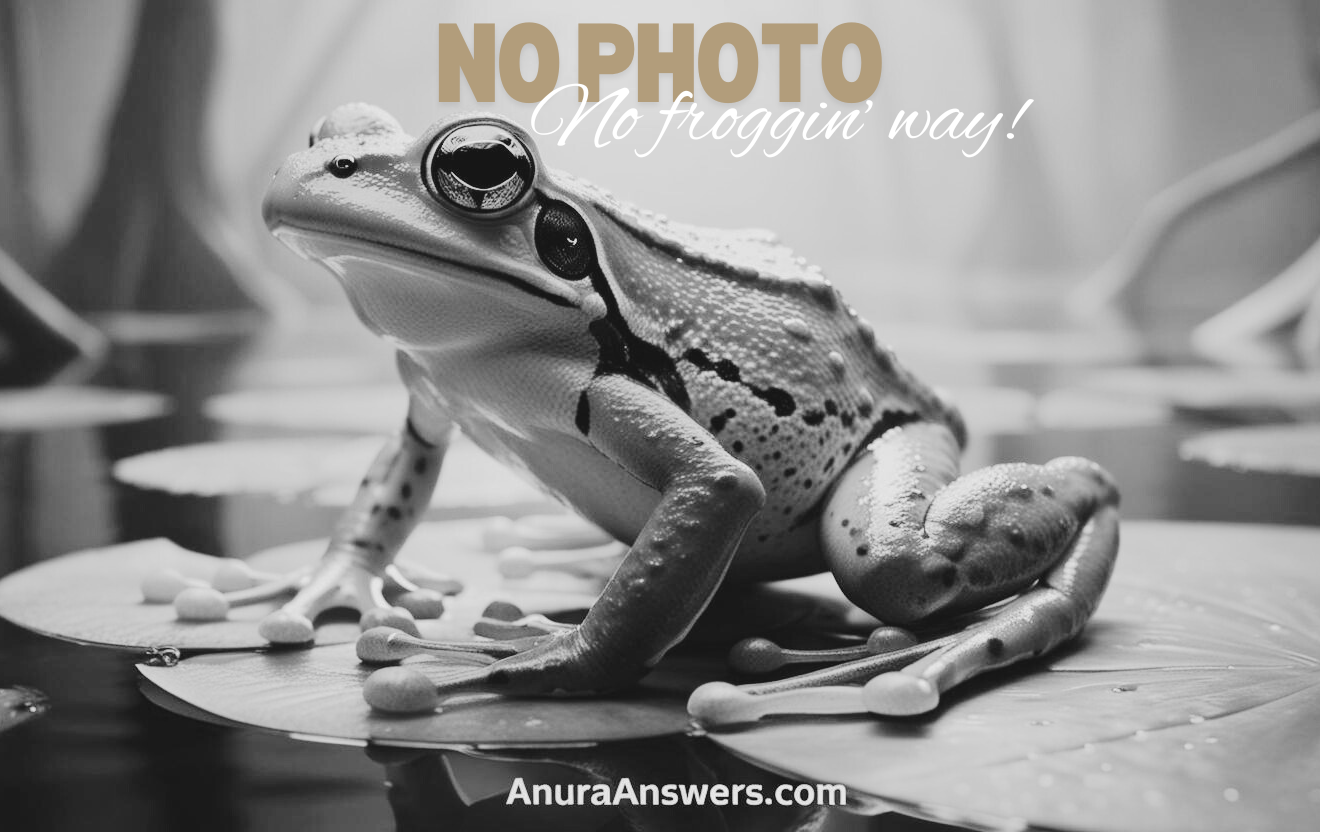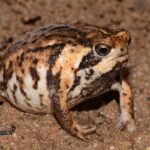- Brachycephalus tabuleiro: Brazil’s Tiny Golden Treasure of the Atlantic Forest
- Taxonomy and Classification
- Natural Habitat: Hidden Worlds Beneath Your Feet
- Physical Characteristics: Small Body, Brilliant Significance
- Behavior and Life Cycle: Quiet Lives, Extraordinary Strategies
- Ecological Role: Small Player, Massive Impact
- Threats and Conservation Status: A Race Against Time
- Cultural and Scientific Significance: Tiny Teachers of Nature’s Wonders
- Conclusion: A Call to Protect Our Smallest Wonders
Brachycephalus tabuleiro: Brazil’s Tiny Golden Treasure of the Atlantic Forest#
Imagine walking through the lush undergrowth of Brazil’s Atlantic Forest, your senses engaged by an orchestra of nature’s sounds—the soft rustle of leaves, the distant call of tropical birds, and the gentle drip of moisture from canopy leaves. Underfoot, amid wet moss and decomposing foliage, you might stumble upon a tiny, vibrant jewel of nature—Brachycephalus tabuleiro. This enchanting frog, a recent discovery in the realm of biodiversity, represents far more than its minuscule stature would suggest.
Officially classified as species Brachycephalus tabuleiro, this miniature amphibian captures immediate attention due to its striking coloration and diminutive size. Measuring only a few millimeters in length, it is among the smallest vertebrates on Earth. Yet despite its tiny size, its ecological role, intriguing behaviors, and unique adaptations weave an extraordinary story worth exploring.
Taxonomy and Classification#
The Brachycephalus tabuleiro belongs to the family Brachycephalidae, specifically within the genus Brachycephalus, a group famous for its distinctive miniature size, vibrant colors, and unique skeletal features. The genus itself is endemic to Brazil’s Atlantic Forest, renowned for harboring one of the world’s richest diversities of flora and fauna.
Described scientifically only recently, in 2017 by Condez et al., Brachycephalus tabuleiro immediately drew attention for its distinguished morphological and phylogenetic traits. Within its genus, it relates closely to other brightly colored species like Brachycephalus ephippium and Brachycephalus pitanga, highlighting subtleties within Brazil’s incredible amphibian biodiversity and underscoring the need for extensive scientific exploration in these fragile ecosystems.
Natural Habitat: Hidden Worlds Beneath Your Feet#
Brachycephalus tabuleiro thrives exclusively within a narrow altitudinal range of the Atlantic Rainforest biome in southeastern Brazil, notably in parts of Espírito Santo state. Its name, “tabuleiro,” is derived from the local Tabuleiros forests, gently rolling coastal plains rich with moisture and densely lush understories—ideal conditions for this unique amphibian species.
The habitat is characterized by a humid, temperate microclimate with persistent rainfall throughout the year, allowing the forest litter to remain moist and fostering abundant fungal and insect life—perfect prey for these tiny frogs. Beneath towering canopies and amidst dense vegetation is where they confidently dwell, often invisible unless one searches meticulously, turning over leaves or logs, exposing these living treasures.
The special microhabitats within these forests—fallen leaves, moist moss patches, and rotting logs—are more than just refuge spots; they are essential life-givers. The frog’s physiology, adapted superbly to this specific environmental niche, underscores the importance of microhabitat preservation. Any slight alteration can mean disaster for such highly specialized organisms, rendering their precarious status abundantly clear.
Physical Characteristics: Small Body, Brilliant Significance#
A glance at Brachycephalus tabuleiro reveals instantly its remarkable and striking appearance. Featuring a bright orange to golden-yellow hue, this frog stands out like a tiny gem against the dark forest floor. Its vivid coloration not only captures the imagination of scientists and naturalists alike but also serves as a critical biological tool.
The frog’s flamboyant coloration functions as aposematic signaling, denoting toxicity or unpleasant taste—a survival mechanism discouraging potential predators. Its skin contains chemical compounds that, although mildly toxic to predators, render it largely unpalatable—a classic example of evolutionary cleverness ensuring the species’ ongoing survival in a complex and competitive environment.
At less than one centimeter in length, this amphibian is unquestionably compact. However, its uniquely stunted skeletal structure sets it apart considerably from other species. Its bones are notably ossified, giving the frog a robust quality despite its tiny stature, serving simultaneously to retain body moisture and offer some resistance against physical injuries.
Behavior and Life Cycle: Quiet Lives, Extraordinary Strategies#
Dietary Habits and Predation Techniques#
Brachycephalus tabuleiro may be small, but it boasts formidable hunting skills—at least among the microscopic insect world it calls prey. Ants, mites, springtails, and tiny arthropods make up the diet of this miniature predator. Using stealth and minimal movement, the frog ambushes unsuspecting prey items, snapping them up swiftly with its sticky tongue before disappearing back into its leafy hideouts.
Breeding and Parental Behavior#
The reproductive strategies of Brachycephalus frogs are as fascinating as their size. Females lay a mere clutch of eggs, strategically depositing them amid wet leaf litter or under bark fragments to ensure moisture retention. Unlike other frog species which undergo an aquatic tadpole stage, these small amphibians exhibit direct development, and hatchlings emerge as miniature replicas of adults.
This fascinating adaptation bypasses the vulnerabilities associated with aquatic stages, securing a higher survival rate in an environment prone to drying rapidly or fluctuating unpredictably. This direct-development strategy ensures juveniles are immediately capable of surviving independently, though predators and harsh environmental conditions still challenge their fragile beginnings.
Ecological Role: Small Player, Massive Impact#
Despite their diminutive sizes, species like Brachycephalus tabuleiro hold undeniably vital roles within their ecological balance. Acting as control agents for invertebrate populations, they help maintain insect numbers within manageable bounds, indirectly influencing plant health and forest composition.
This tiny amphibian also plays crucial ecological indicator roles. Because of their sensitivity to microclimatic changes and forest health, their very presence or absence is a valuable bioindicator for scientists monitoring this fragile ecosystem’s overall health. Therefore, a healthy population of B. tabuleiro signifies balanced moisture levels, low contamination, and largely stable ecological dynamics.
Threats and Conservation Status: A Race Against Time#
Sadly, as a recently described species whose habitat is dangerously shrinking, Brachycephalus tabuleiro faces dire threats. The relentless expansion of agriculture, urbanization, and habitat degradation—primarily through logging and mining—endangers these sensitive amphibians daily.
Although specific IUCN classification data might still be pending due to the species’ recent documentation, conservationists urgently recognize that immediate protective measures are critical. Without dedicated habitat preservation action, scientists fear the loss of not only this species but potentially numerous other specialized amphibians yet undiscovered within its dwindling habitats.
Current efforts are underway to secure habitat protection legally, conducting ecological surveys and biological monitoring to aid precise conservation strategies. Biodiversity researchers collaborate actively with local communities, highlighting the economic and ecological value in preserving these miniature wonders and their precious environments.
Cultural and Scientific Significance: Tiny Teachers of Nature’s Wonders#
The discovery of species such as Brachycephalus tabuleiro underscores a fundamental truth—vast realms of biological diversity still await exploration, even in settings seemingly familiar or frequently visited. Scientifically, these frogs aid researchers in better understanding evolutionary adaptation, toxin development, and biodiversity indicators in tropical biomes.
Locally, the presence of such spectacular wildlife generates pride and illustrates vividly the richness of Brazil’s biodiversity, offering an unparalleled teaching moment. Efforts to protect the species inadvertently promote broader conservation campaigns, enhancing societal appreciation for preserving ecosystems that support human life as well.
Conclusion: A Call to Protect Our Smallest Wonders#
Brachycephalus tabuleiro represents far more than its delicate and charming appearance suggests. In this tiny frog lies a remarkable embodiment of adaptation, ecological importance, and mystery. By preserving this unique amphibian, we directly affirm our commitment to maintaining the extraordinary biodiversity upon which all life ultimately depends.
In the end, the survival of Brachycephalus tabuleiro hinges upon our actions. Conservation measures must receive increased global support, including research funding, habitat protection, and public engagement efforts. Let us rise to this challenge together, protecting these small golden jewels of Brazil’s Atlantic Forest and opening ourselves to many more discoveries about the surprising world underfoot.







